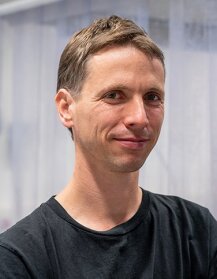- Light
- Forschung
Published: | By: Ira Winkler & Sina Seidenstücker
A team of four scientists from Friedrich Schiller University Jena and the Fraunhofer Institute for Applied Optics and Precision Engineering IOF has been awarded the Thuringian Research Prize. This award recognizes outstanding scientific achievements in "Applied Research" and was presented at a ceremony at the Technical University of Ilmenau on 18 June. The prize is endowed with 25,000 euros.
A hundred thousand times thinner than a hair, stronger than steel and efficient mediators between light and electricity - 2D materials have extraordinary properties and enormous application potential. They consist of only one or a few atomic layers and differ drastically from their three-dimensional source materials.
One prominent example is graphene, a material a single carbon atom thick that is isolated from graphite. Graphene exhibits an extremely high mobility of electrical charge carriers, a unique electronic structure that leads to new quantum states and thus physical phenomena, as well as maximum thermal conductivity and a tensile strength that is many times higher than that of steel.
The award-winning research team of Prof. Dr. Andrey Turchanin, Dr. Antony George, Dr. Christof Neumann from the Institute of Physical Chemistry and Dr. Falk Eilenberger (Fraunhofer IOF and Institute for Applied Physics) focused on this class of materials. Their work spans the entire value chain, from basic research to prototypes for environmentally friendly technologies such as filters and sensors for chemicals - the key feature is the focus on the scalability of the methods, up to wafer size with standardized processes, so that companies can quickly adopt this technology.
Detailed research work
Fundamental investigations and method development
The team initially focused on the fundamental understanding of the fabrication processes and material effects of 2D materials. A central role here was played by chemical vapor deposition (CVD and MOCVD), a technique in which materials are deposited on a substrate surface in a gas phase. This method enables the production of extremely thin layers that are only a few atomic layers thick.
Prof. Dr. Andrey Turchanin's team developed special techniques to grow the crystal structures of materials such as MoS2 (molybdenum disulphide), h-BN (hexagonal boron nitride) and graphene using established methods on silicon or glass plates. These materials are particularly interesting in their 2D forms as they have unique electronic, optical and mechanical properties.
Investigating the material properties
Dr. Falk Eilenberger and his team characterized the physical and chemical properties of these materials. Their investigations focused in particular on transition metal dichalcogenides (TMDs). In their 3D form, TMDs are indirect semiconductors, which limits their potential applications. In their 2D form, however, they transform into direct semiconductors that can efficiently convert electricity into light and vice versa. This makes them excellent candidates for the next generation of transistors and photonic devices. "The new process not only enabled us to produce the 2D materials efficiently, but also to grow them scalably as functional components on optical components," explains Dr. Eilenberger. "This allows us to integrate TMD materials into optical fibers, among other things, which opens up a range of new application possibilities."
Applications
With the knowledge gained, the researchers jointly developed a series of application scenarios:
The world's thinnest LED
One of the team's remarkable successes was the development of what is probably the world's thinnest light-emitting diode (LED). By integrating TMDs into photonic chips, the researchers succeeded in developing LEDs that are not only extremely small but also very efficient. These LEDs could play an important role in future display technologies and optical communication systems.
Improving battery life
Another highlight is the extension of the service life of lithium metal batteries through the use of carbon nanomembranes (CNMs). These membranes prevent the growth of dendrites, which destroy the batteries with conventional separator membranes. This has more than doubled the service life of the batteries.
Filter technologies and environmental applications
The sub-nanometer pores of CNMs are also ideally suited for innovative filter technologies. These filters are not only energy-efficient, but also offer increased selectivity and stability. For example, they could be used for the filtration of pollutants such as PFAS in water treatment.
Unique research conditions in Thuringia
The close collaboration with the "Applied Physical Chemistry and Molecular Nanotechnology" group headed by Prof. Andrey Turchanin and Dr. Eilenberger was crucial to the success of the project.
Dr. Eilenberger also emphasizes the special research environment in Thuringia: "We have a very unique situation here on site, which played a key role in the success of our project," he says with regard to the award. "In Thuringia, and especially in Jena, photonics expertise meets excellent scientific facilities, both in terms of personnel and technology, as well as risk-taking companies that do not shy away from innovative projects."
The Free State of Thuringia has been awarding the Thuringian Research Award once a year since 1995 to honor scientific excellence at Thuringian universities and non-university research institutions. The most excellent research achievements by individuals or research groups in the categories of basic and applied research are awarded with prize money of €25,000 each and the Research Prize Award.
